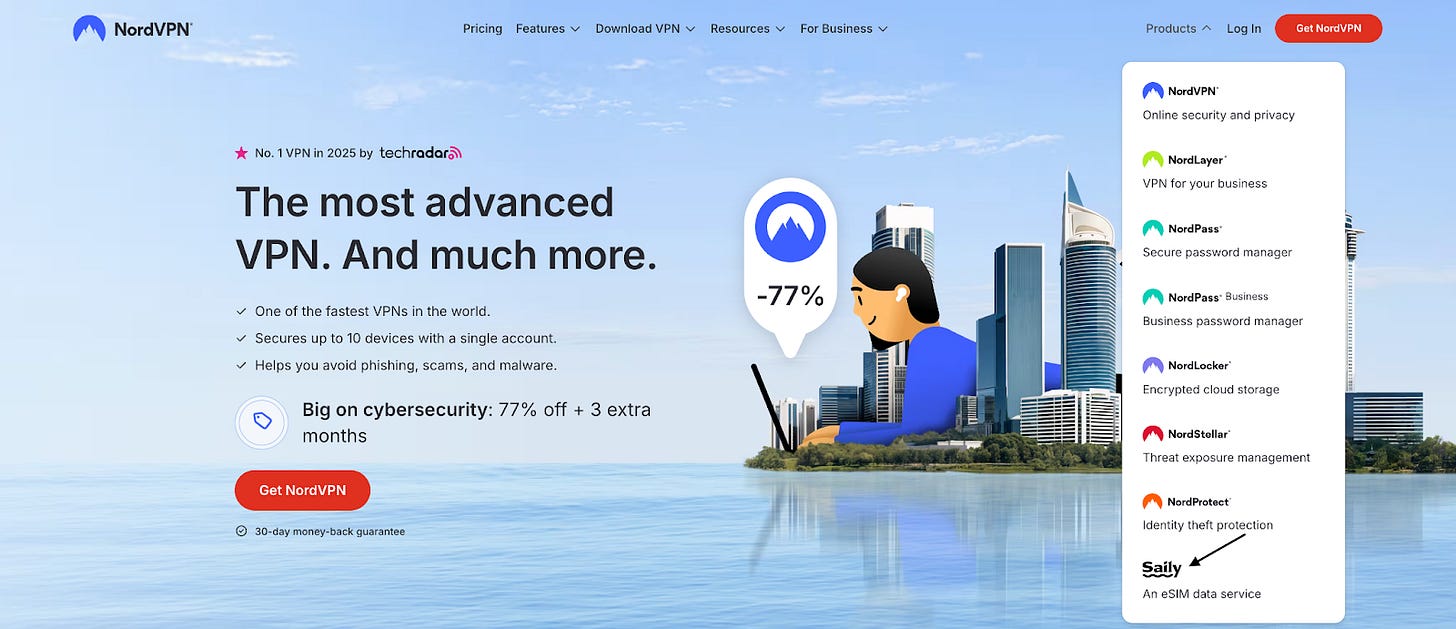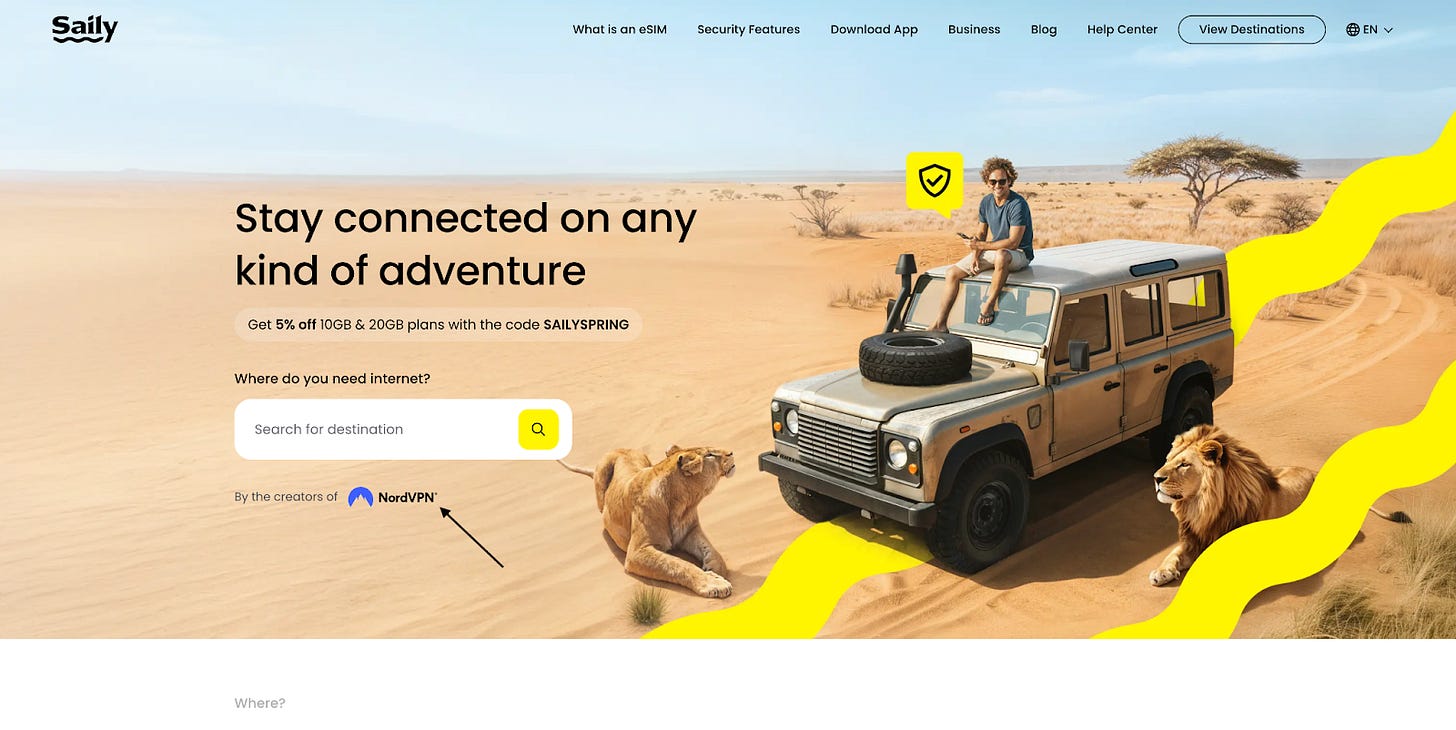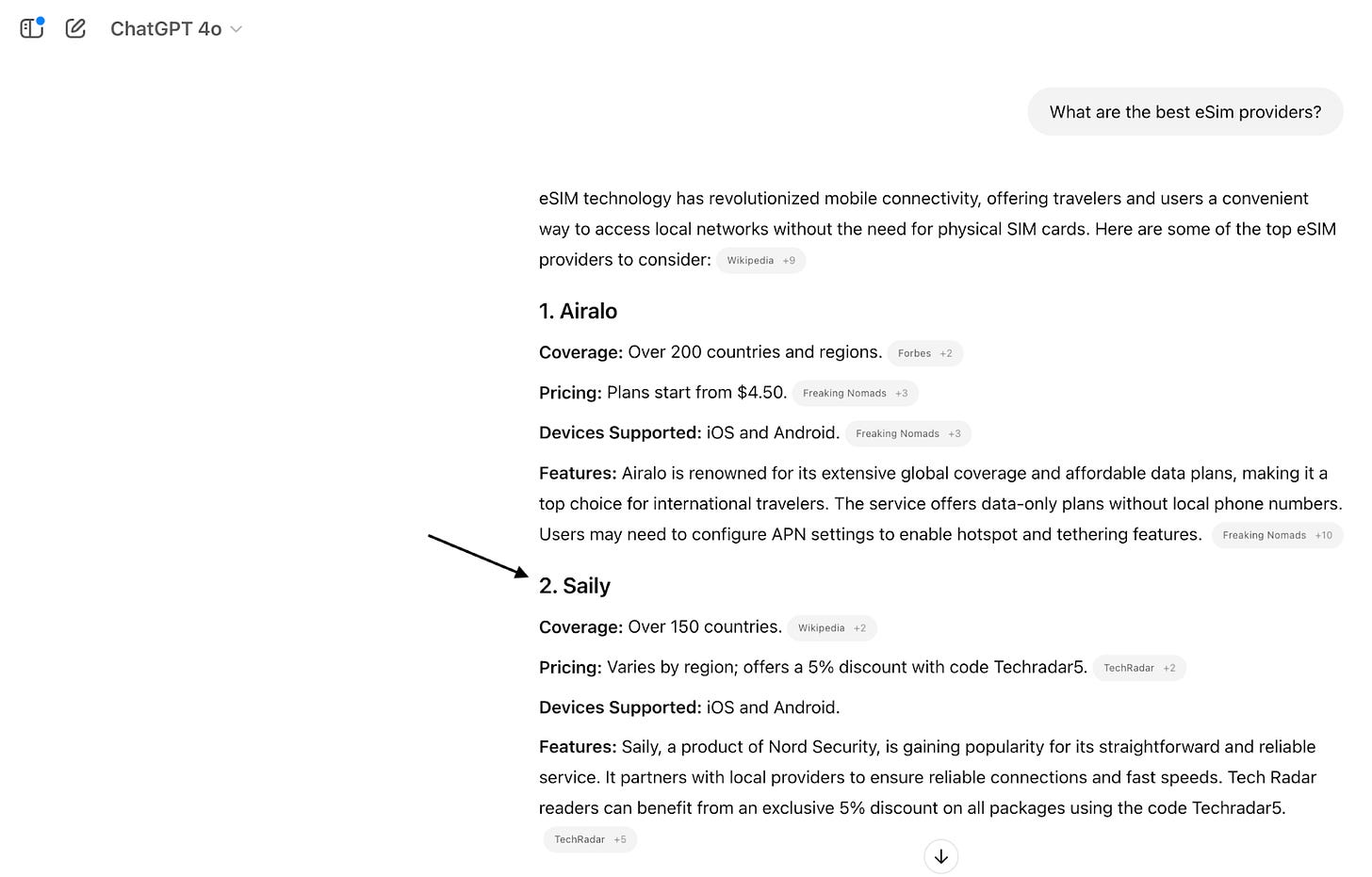Multi-Product Growth Flywheel
The strategy behind Saily’s growth and Nord’s multi-product play
👋 Hey, I’m George Chasiotis. Welcome to GrowthWaves, your weekly dose of B2B growth insights—featuring powerful case studies, emerging trends, and unconventional strategies you won’t find anywhere else.
This GrowthWaves note is brought to you by SaaStanak.
For SaaS founders and conference lovers, here’s one worth checking out: SaaStanak 2025.
📅 May 5-7, 2025
👥 500+ attendees, 40+ speakers
🌍 CEE SaaS founders, operators, and industry leaders
Set in the beautiful Adriatic city of Šibenik, Croatia, this three-day event is organized by the largest SaaS community in CEE. Expect insightful sessions, a wine-tasting tour, a SaaS boat tour, and relaxed evening gatherings—perfect for building real connections.
You'll hear unfiltered stories from excited founders, learn practical strategies from those who’ve been in the trenches, and exchange ideas with like-minded people in a laid-back setting. If you're looking for a conference that blends learning, networking, and a bit of adventure, this one should be on your radar.
Use the code growthwaves to save 10% on your tickets.
Recently I had a chat with a friend.
He attended a tech conference in the Baltics.
One of the speakers was working for a company called Saily.
“It’s founded by NordVPN,” my friend told me.
“That’s interesting,” I thought.
“NordVPN launched an eSim service? I have to check this.”
I decided to check the website and use the service on my trip to Bulgaria a few weeks ago.
And with that, I came up with a new framework.
Context
NordVPN is part of Nord Security, a cybersecurity suite of products.
Take a look at the ‘Products’ section on NordVPN’s website:

You’ll find a product called ‘Saily’ at the bottom of the list.
Last year, towards the end of March, Nord Security introduced a new eSim provider called Saily.
The relationship between the two companies is also displayed on Saily’s website:

NordVPN’s access to publications and media allowed them to go big on the launch.
But the launch wasn’t just a flashlight.
Because Saily has built itself into a global brand name in its category.
As of today, Wednesday, April 2nd, Saily is the first organic search result on Google (right below the unbearable clutter of ads and AI Overviews) for the term ‘esim’ comes from Saily:
It is also the second app recommended by ChatGPT for the question, ‘What are the best eSim providers?’:
In isolation, that doesn’t mean much.
But, putting Saily side-by-side with its competitors and understanding the eSim market, you can see that what the company has achieved since its inception is impressive.
The market
Even though I couldn’t find reliable user data for the company, we can examine some other data points that paint a somewhat clear picture of Saily’s growth trajectory relative to its competitors.
First, here’s a table showing the launch data for each of the most prominent players in this category.





